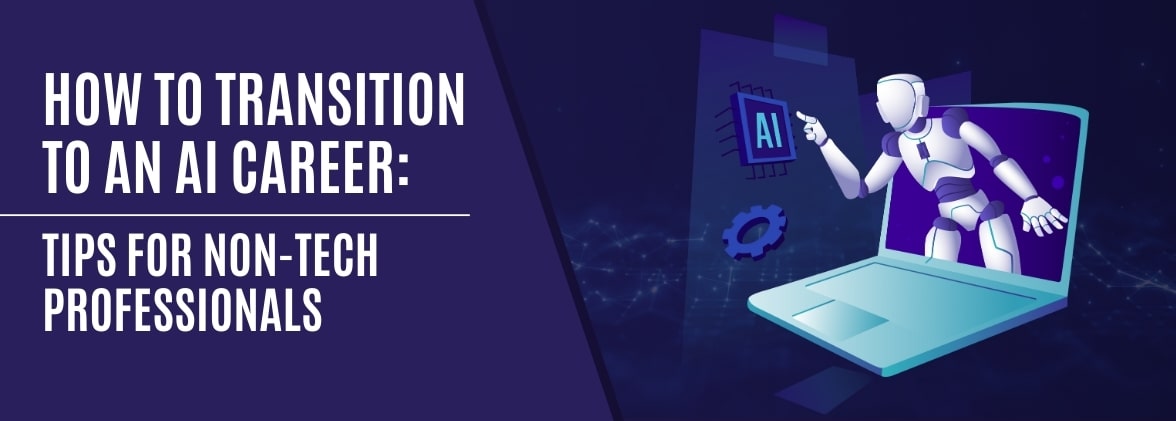Why Investing in Training Matters for Long-Term Business Growth

Introduction
In today’s dynamic business environment, organizations face constant pressures to stay ahead of technological advancements, evolving industry standards, and shifting employee expectations. Companies that prioritize skill development view training not merely as an expense but as a strategic investment that fuels long-term growth and sustainability. This shift in perspective unlocks numerous benefits—from boosting productivity to enhancing employee retention and building a culture of innovation. Here’s why investing in training as a growth tool is crucial for companies that want to succeed today and in the future.
Why Training Should Be Viewed as an Investment
When budget constraints arise, training is often one of the first areas to face cuts. However, reducing training initiatives can lead to a less skilled, less adaptable workforce, ultimately affecting the company’s long-term performance and competitive standing. By treating training as an investment rather than an expense, companies create a culture of continuous improvement and adaptability, ensuring that employees are equipped to meet changing demands and contribute to business growth.
Benefits of Investing in Employee Training
Viewing training as a strategic investment leads to numerous long-term advantages. Let’s explore the top benefits of investing in workforce development.
1. Enhanced Productivity and Efficiency
Training empowers employees to perform their jobs more effectively, with the right skills and knowledge to approach tasks confidently. This leads to improved productivity and efficiency, as employees make fewer mistakes, complete work faster, and deliver higher-quality outcomes.
For example, Tech-Act’s targeted training programs cover everything from basic IT skills to advanced digital capabilities, enhancing employee performance across functions. This investment in skill-building translates directly into measurable productivity gains.
2. Improved Employee Retention and Engagement
Investing in employee training shows a commitment to their growth and development, which boosts morale and fosters loyalty. Training makes employees feel valued and gives them a clear path to advance within the organization. This increases job satisfaction and reduces turnover, saving the business substantial recruitment costs.
Studies have shown that employees rank learning and development as one of the top reasons they stay with a company. Offering growth opportunities through training helps companies retain skilled talent, reducing the disruptions and costs associated with high turnover.
3. Increased Innovation and Competitive Edge
Continuous learning stimulates innovation, encouraging employees to explore new ideas and approaches. Training in areas like digital transformation, data analytics, and cybersecurity empowers teams to think creatively and adopt innovative practices that drive the business forward.
With specialized programs from Tech-Act, employees gain the skills needed to leverage emerging technologies and methodologies, giving the organization a competitive edge. A culture that prioritizes learning and innovation stays adaptable and prepared to seize new market opportunities.
4. Adaptability to Industry Changes and Market Trends
Today’s business world demands agility. Training enables employees to stay up-to-date with industry trends, adopt new processes quickly, and respond effectively to regulatory changes or technological advancements. Organizations with a continuous focus on training build a workforce that can pivot when needed, helping the business stay relevant and resilient.
Programs like Tech-Act’s ReSkill and UpSkill solutions ensure that employees are equipped to tackle current demands while preparing for future challenges. This adaptability is essential for long-term business stability and growth.
5. Building a Strong Company Brand
Organizations that invest in their employees’ growth gain a reputation as great places to work, enhancing their brand. This not only attracts top talent but also demonstrates the company’s commitment to supporting its workforce. A strong brand attracts motivated, skilled employees and positions the organization as an industry leader.
Promoting a learning-oriented culture strengthens the organization’s image, making it easier to recruit and retain talent eager to grow and contribute.
6. Long-Term Financial Gains
While training may require upfront investment, the long-term financial benefits are substantial. Well-trained employees are more productive, make fewer costly errors, and work efficiently, leading to higher profitability. Organizations often find that the initial costs of training are offset by the improvements in performance, enhanced employee satisfaction, reduced turnover, and a stronger competitive stance.
For example, companies that train their teams in advanced IT and digital skills—like those offered by Tech-Act—can leverage digital transformation initiatives, leading to significant cost savings and revenue growth.
Implementing Training as a Growth Strategy
To realize the full benefits of training, companies should approach it as a continuous investment, aligning programs with organizational goals. Training is most effective when tailored to each team’s specific needs, encouraging employees to apply new skills in real-world scenarios. Partnering with a provider like Tech-Act ensures that training is relevant, flexible, and aligned with the company’s growth objectives, maximizing impact and ROI.
Conclusion
Investing in training goes beyond building technical skills—it’s a commitment to building a resilient, agile organization ready to thrive in a competitive world. Companies that treat training as a strategic growth tool build a foundation of skilled, engaged employees who drive productivity, innovation, and long-term success.
Ready to invest in your workforce’s future?
Connect with Tech-Act to discover how our tailored training solutions can support your business strategy and empower your team to lead in today’s dynamic environment.
FAQs
Why should companies consider training as an investment rather than an expense?
Training enhances productivity, engagement, retention, and innovation, bringing long-term returns that outweigh initial costs. It directly contributes to an organization’s growth, resilience, and competitive advantage.
What types of training programs offer the highest return on investment?
Programs focused on in-demand areas like digital transformation, data analytics, and cybersecurity offer substantial ROI. Tech-Act’s tailored training solutions focus on these high-impact skills to maximize returns.
How can training improve employee retention?
Training demonstrates that a company values its employees’ growth, fostering a sense of purpose and future-oriented development. This boosts job satisfaction and loyalty, reducing turnover.
How does training support a company’s adaptability?
Training equips employees with skills that allow them to respond quickly to industry changes, technological advances, and market shifts, ensuring the organization remains agile and adaptable.
How can I get started with a training solution like Tech-Act?
Reach out to Tech-Act for a consultation. Their team will assess your organizational goals and customize a training program to meet your needs, aligning with your growth strategy.
With Tech-Act, you’re not just investing in employee skills; you’re building a future-ready workforce poised to propel your business forward.
Introduction
In today’s dynamic business environment, organizations face constant pressures to stay ahead of technological advancements, evolving industry standards, and shifting employee expectations. Companies that prioritize skill development view training not merely as an expense but as a strategic investment that fuels long-term growth and sustainability. This shift in perspective unlocks numerous benefits—from boosting productivity to enhancing employee retention and building a culture of innovation. Here’s why investing in training as a growth tool is crucial for companies that want to succeed today and in the future.
Why Training Should Be Viewed as an Investment
When budget constraints arise, training is often one of the first areas to face cuts. However, reducing training initiatives can lead to a less skilled, less adaptable workforce, ultimately affecting the company’s long-term performance and competitive standing. By treating training as an investment rather than an expense, companies create a culture of continuous improvement and adaptability, ensuring that employees are equipped to meet changing demands and contribute to business growth.
Benefits of Investing in Employee Training
Viewing training as a strategic investment leads to numerous long-term advantages. Let’s explore the top benefits of investing in workforce development.
1. Enhanced Productivity and Efficiency
Training empowers employees to perform their jobs more effectively, with the right skills and knowledge to approach tasks confidently. This leads to improved productivity and efficiency, as employees make fewer mistakes, complete work faster, and deliver higher-quality outcomes.
For example, Tech-Act’s targeted training programs cover everything from basic IT skills to advanced digital capabilities, enhancing employee performance across functions. This investment in skill-building translates directly into measurable productivity gains.
2. Improved Employee Retention and Engagement
Investing in employee training shows a commitment to their growth and development, which boosts morale and fosters loyalty. Training makes employees feel valued and gives them a clear path to advance within the organization. This increases job satisfaction and reduces turnover, saving the business substantial recruitment costs.
Studies have shown that employees rank learning and development as one of the top reasons they stay with a company. Offering growth opportunities through training helps companies retain skilled talent, reducing the disruptions and costs associated with high turnover.
3. Increased Innovation and Competitive Edge
Continuous learning stimulates innovation, encouraging employees to explore new ideas and approaches. Training in areas like digital transformation, data analytics, and cybersecurity empowers teams to think creatively and adopt innovative practices that drive the business forward.
With specialized programs from Tech-Act, employees gain the skills needed to leverage emerging technologies and methodologies, giving the organization a competitive edge. A culture that prioritizes learning and innovation stays adaptable and prepared to seize new market opportunities.
4. Adaptability to Industry Changes and Market Trends
Today’s business world demands agility. Training enables employees to stay up-to-date with industry trends, adopt new processes quickly, and respond effectively to regulatory changes or technological advancements. Organizations with a continuous focus on training build a workforce that can pivot when needed, helping the business stay relevant and resilient.
Programs like Tech-Act’s ReSkill and UpSkill solutions ensure that employees are equipped to tackle current demands while preparing for future challenges. This adaptability is essential for long-term business stability and growth.
5. Building a Strong Company Brand
Organizations that invest in their employees’ growth gain a reputation as great places to work, enhancing their brand. This not only attracts top talent but also demonstrates the company’s commitment to supporting its workforce. A strong brand attracts motivated, skilled employees and positions the organization as an industry leader.
Promoting a learning-oriented culture strengthens the organization’s image, making it easier to recruit and retain talent eager to grow and contribute.
6. Long-Term Financial Gains
While training may require upfront investment, the long-term financial benefits are substantial. Well-trained employees are more productive, make fewer costly errors, and work efficiently, leading to higher profitability. Organizations often find that the initial costs of training are offset by the improvements in performance, enhanced employee satisfaction, reduced turnover, and a stronger competitive stance.
For example, companies that train their teams in advanced IT and digital skills—like those offered by Tech-Act—can leverage digital transformation initiatives, leading to significant cost savings and revenue growth.
Implementing Training as a Growth Strategy
To realize the full benefits of training, companies should approach it as a continuous investment, aligning programs with organizational goals. Training is most effective when tailored to each team’s specific needs, encouraging employees to apply new skills in real-world scenarios. Partnering with a provider like Tech-Act ensures that training is relevant, flexible, and aligned with the company’s growth objectives, maximizing impact and ROI.
Conclusion
Investing in training goes beyond building technical skills—it’s a commitment to building a resilient, agile organization ready to thrive in a competitive world. Companies that treat training as a strategic growth tool build a foundation of skilled, engaged employees who drive productivity, innovation, and long-term success.
Ready to invest in your workforce’s future?
Connect with Tech-Act to discover how our tailored training solutions can support your business strategy and empower your team to lead in today’s dynamic environment.
FAQs
Why should companies consider training as an investment rather than an expense?
Training enhances productivity, engagement, retention, and innovation, bringing long-term returns that outweigh initial costs. It directly contributes to an organization’s growth, resilience, and competitive advantage.
What types of training programs offer the highest return on investment?
Programs focused on in-demand areas like digital transformation, data analytics, and cybersecurity offer substantial ROI. Tech-Act’s tailored training solutions focus on these high-impact skills to maximize returns.
How can training improve employee retention?
Training demonstrates that a company values its employees’ growth, fostering a sense of purpose and future-oriented development. This boosts job satisfaction and loyalty, reducing turnover.
How does training support a company’s adaptability?
Training equips employees with skills that allow them to respond quickly to industry changes, technological advances, and market shifts, ensuring the organization remains agile and adaptable.
How can I get started with a training solution like Tech-Act?
Reach out to Tech-Act for a consultation. Their team will assess your organizational goals and customize a training program to meet your needs, aligning with your growth strategy.
With Tech-Act, you’re not just investing in employee skills; you’re building a future-ready workforce poised to propel your business forward.




























